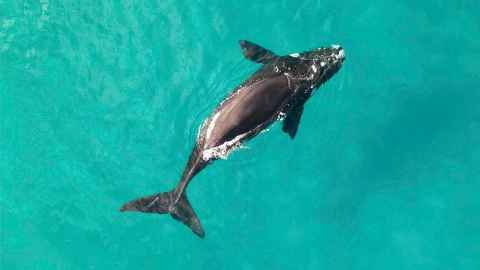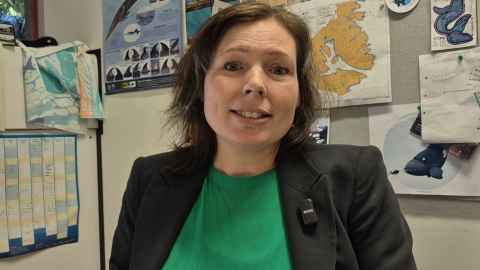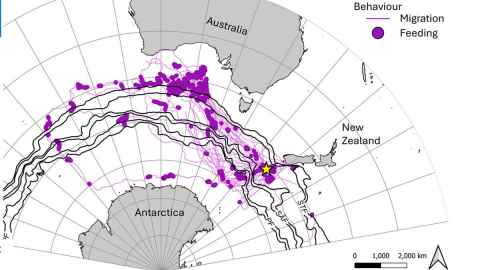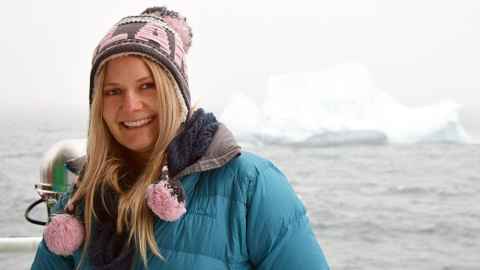Discovery of whale feeding zone triggers call for protection
22 August 2025
New Zealand's southern right whales, or tohorā, are keen on a zone south of Australia that needs protecting.

Satellite tracking of New Zealand southern right whales, or tohorā, has revealed a key feeding location about 500kms south of Australia that needs to be protected, University of Auckland scientists say.
Scientists tracked 25 tohorā from the subantarctic Maungahuka/Auckland Islands as the whales travelled through the Southern Ocean in a study published in the journal Global Ecology and Conservation.
“It turned out that one destination was by far the most popular,” says Dr Leena Riekkola, a Rutherford Postdoctoral Fellow in the School of Biological Sciences, who was the lead author of the research paper. “Ninety percent of the whales travelled to a zone south of Australia, rich in prey, where different waters converge.”

Protecting the zone would help to extend that rarest thing: a conservation success story. After dwindling to as few as 400 individuals early last century because of whaling, southern right whales now number around 15,000 globally.
“This work highlights why this region should be a marine protected area under the High Seas Treaty,” says Dr Emma Carroll, the senior author of the study. “Other animals like seabirds, sharks, and seals all rely on it, too.”
The High Seas Treaty – formally known as the Biodiversity Beyond National Jurisdiction Agreement – will let nations propose areas where fishing and other activities are limited. It will come into force once more nations have signed up.

“Once ratified, this treaty could provide a way of protecting these critical feeding areas for whales, but also seabirds, seals, fish and sharks,” says Riekkola.
The area south of Australia stretches over 2,000km in an east-west direction and about 1,000km north-south and key feeding areas are near the Subtropical Front, which is a boundary between warm, salty subtropical waters and cooler Antarctic waters.
The zone is a destination for the whales from October to January, while they winter at the Maungahuka/Auckland Islands.
Fifteen Australian whales tracked in the study had more diverse foraging grounds, leading scientists to ponder whether they will be better at adapting to the inevitable shifts in prey locations because of climate change.
The research was funded by Royal Society Te Apārangi Rutherford Discovery and Postdoctoral Fellowships, Live Ocean, Lou and Iris Fisher Charitable Trust, Joyce Fisher Charitable Trust, Brian Sheth/Sangreal Foundation, UOA Science Faculty Research Development Fund, International Whaling Commission – Southern Ocean Research Partnership, Antarctic and Southern Ocean Coalition, DOC, the Cawthron Institute, Marine Predator Research Group at Macquarie University, and the Rae Family Foundation to UWA.

Media contact
Paul Panckhurst | Science media adviser
M: 022 032 8475
E: paul.panckhurst@auckland.ac.nz